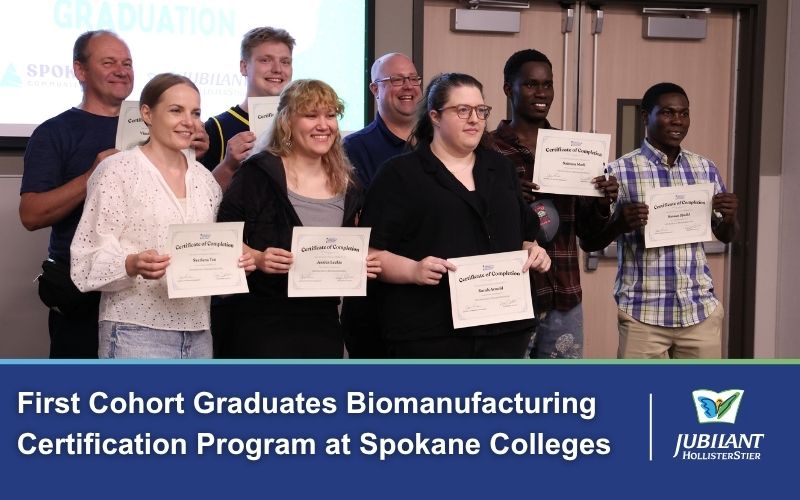
Introduction
Performing an airflow visualization study, known as a “smoke study”, allows manufacturers to observe air movement within a cleanroom to ensure the facility is following aseptic processing best practices. A smoke study can be part of a qualification package that engineers and other experts complete after designing a new line or when observing existing cleanrooms. Jubilant HollisterStier (JHS) conducts smoke studies as part of our ongoing contamination control strategy and during the validation of our new, state-of-the-art aseptic filling lines with integrated, full isolator capacity.
Why Are Smoke Studies Important?
Air is the first barrier against contamination for open products during the aseptic manufacturing process. Even when operators follow all GMP guidelines for grade A or ISO5 cleanrooms, dust in the air contains microbes and particulate contaminates that could potentially land on an open product and compromise its quality and safety. Engineers want to see that the airflow is starting from the highest-grade clean area and moving in same direction together toward the lower grade area. A turbulent airflow or air blowing in from the wrong direction increases the likelihood of particulate contamination.
How Are Smoke Studies Performed?
Validation teams start off a smoke study by releasing propylene glycol or liquid nitrogen into the air from a particle fog generator to make airflow patterns visible to the naked eye. Team members record videos of the test from multiple angles for quality assurance and for other experts to review and document. After monitoring the airflow patterns while the line is at rest, the validation team will now repeat the test with the machines in operation. For the third and final test, operators take their usual places at the line. Conducting a smoke study while operators mimic working gives feedback for the best ways to use the equipment to avoid disrupting airflow. After running all three kinds of tests, the team will clean up any residue left by the aerosolized solution.
If anyone notices an issue with the airflow, the team will first look for an engineering or maintenance fix to eliminate the root cause. If the issue is caused by an operator disrupting the airflow, the team will evaluate the current SOP and make any procedural or training changes if necessary. Smoke studies are one part of a complete validation package that should be considered alongside results from other tools and tests. The environmental monitoring team will also swab the solid structures inside a cleanroom and check those samples for particulates and contaminates.
Conclusion
Performing a successful smoke study and other validation tests can provide evidence that a cleanroom’s layout and operation protocols are functioning correctly to produce sterile outputs. When qualifying our third aseptic fill-finish line in Spokane, our team members performed and recorded a successful test that met the requirements of Annex 1 guidelines. Smoke studies ensure our filling lines are operating under the best sterility conditions to make high-quality products for our partners with full regulatory confidence.



